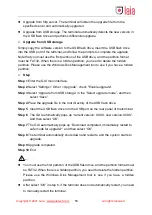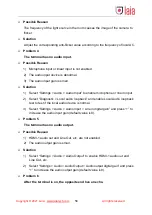
Copyright © 2021 Laia · www.laiatech.com
65
All rights reserved
Terminology Description
IPv4
Internet Protocol version 4: The fourth edition of the Internet Protocol. The
current version of the Internet Protocol (IP). IPv4 uses 32 bytes as the host
address, and each address belongs to one of the five categories A, B, C, D, and
E. The address is a 32-bit code, usually expressed in 4 dotted decimal numbers.
Each address consists of a network code, (optional) subnet code, and host code.
The network code and (optional) subnet code are used for routing, and the host
code is used to address a specific host within the network or subnet.
ITU-T
International Telecommunication Union-Telecommunication
standardization sector
L
LAN
Local Area Network: A network consisting of personal computers and
workstations connected within the same building or within a few kilometers of a
circle has the characteristics of high speed and low error rate. Ethernet, FDDI
and Token Ring are the three main implementation technologies of LAN. Today's
LANs are typically built on switched Ethernet or Wi-Fi technology, running at
1000 Mb/s (ie 1Gb/s).
N
NAT
Network Address Translation: A standard for the Internet Engineering Task
Force. It allows an organization with an IP address far less than its internal
network node to enter the Internet. Network address translation technology
converts a private IP address of a router, firewall, or personal computer on an
internal private network (such as an address in the range of 192.168.0.0) into
one or more Internet public IP addresses. It converts the headers to new
addresses and monitors them through their internal platform. When the packet
is fed back from the Internet, the network address translation uses these
platforms to reverse-convert the IP address of the user host.
NTP
Network Time Protocol
Q
QoS
Quality of Service: One of the common performance indicators of a
communication system or channel. Different systems and services have different
definitions, which may include jitter, delay, packet loss rate, bit error rate, and
signal-to-noise ratio. It is used to measure the transmission quality and service
effectiveness of a transmission system and to assess the ability of service
providers to meet customer needs.



































